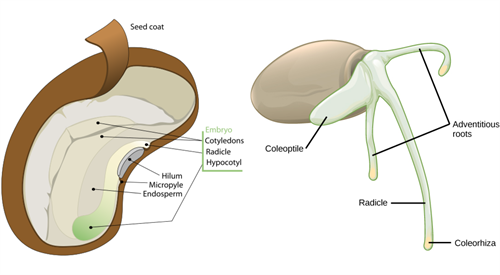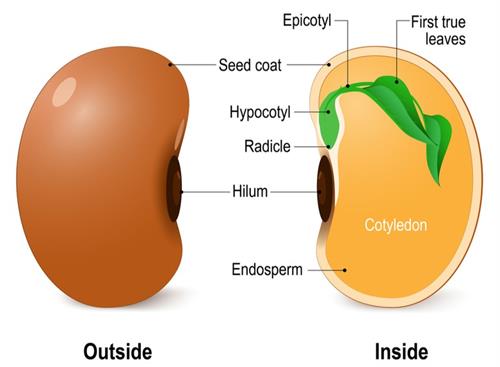
PUMPA - SMART LEARNING
எங்கள் ஆசிரியர்களுடன் 1-ஆன்-1 ஆலோசனை நேரத்தைப் பெறுங்கள். டாப்பர் ஆவதற்கு நாங்கள் பயிற்சி அளிப்போம்
Book Free DemoThe seeds of different plants are different in appearance but their basic structure is same.
The seeds which lack endosperm are known as non-endospermic or Ex-albuminous seeds.
Example:
Mango and pea
- Seed coat
- Embryo
1. Seed coat:
- It is the outer covering of a seed that protects the seed.
- The integument of the ovary develops into the seed coat after fertilization.
- The seed coat comprises two layers.
- The outer layer is known as the testa, and the inner layer is known as tegmen.

Structure of a seed
The micropyle of the ovule is still found in the seed and has the following functions:
- Helps in absorption of water during germination.
- Provides passage for the diffusion of respiratory gases.
2. Embryo:
The part of the seed enclosed inside the seed coat is known as is known as the embryo.
It is the structure that gives rise to a new plant. The embryo of a mature seed can be divided into five parts:
- Cotyledons
- Epicotyl
- Hypocotyl
- Plumule
- Radicle

Structure of a seed
After seed germination, cotyledons form the first leaves. The epicotyl is the area below the plumule, while the hypocotyl is the area above the radicle. After germination, the plumule produces the shoot, while the radicle produces the root.
Reference:
https://commons.wikimedia.org/wiki/File:Dycotyledon_seed_diagram-en.svg
https://commons.wikimedia.org/wiki/File:Figure_32_02_10.jpg
https://www.shutterstock.com/image-illustration/anatomy-bean-seed-diagram-inside-outside-643323241